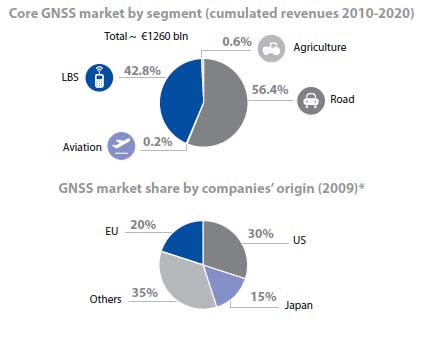
Although a substantial market appears a few years away, two market studies are forecasting great things for indoor positioning systems that will augment or replace GNSS in signal-challenged environments.
Although a substantial market appears a few years away, two market studies are forecasting great things for indoor positioning systems that will augment or replace GNSS in signal-challenged environments.
And a growing number of indoor-positioning technology providers — most recently, Trusted Positioning and mCube — are bringing out products to position themselves for the anticipated growth curve. Another measure of interest in this arena: the In-Location Alliance, an association of companies engaged in indoor-positioning that formed last August, has grown rapidly to more than 80 members today.
An ABI Research report, “Indoor Location Smartphone Applications”, predicts that the ecosystem necessary to drive mass adoption of indoor location applications will be in place by 2016 — with indoor location applications driving more than a billion downloads a year by then. Even at this early stage, the company says, it is clear that indoor location will play a major part in the future of mobile users.
In its new study, “Indoor Location Market: Global Advancements, Market Forecasts and Analysis (2013 – 2018),” Research and Markets, a Dublin, Ireland–based market research firm, projects a 41 percent cumulative annual growth rate (CAGR) for global indoor location, positioning and navigation (IPIN), increasing from $448.56 million in 2013 to $2.60 billion in 2018.
“The market is still very nascent with a number of major handset vendors yet to decide on what technologies they will adopt,” says ABI Research senior analyst Patrick Connolly. “In particular, any decision from Google will have huge repercussions, depending on whether it opens up the Android platform or not."
Connolly says that technical and business issues remain to be resolved regarding indoor maps, data ownership, and interoperability across technologies, buildings, and operating system platforms. “By 2016, the ecosystem will have evolved sufficiently that ABI Research is forecasting strong adoption of indoor location applications, catalyzed by the increasing availability of in-store applications and services,” he adds.
But IPIN solution providers aren’t waiting for the market to get large.
Earlier this month, Trusted Positioning, of Calgary, Alberta, Canada, released its Trusted Portable Navigator (T-PN) indoor location software at Computex Taipei 2013.
Reportedly available for any operating system, including Android, Windows, QNX, BB10, Linux or iOS,the embedded software allows mobile users to navigate such environments as shopping centers, airports, and subway stations without the need for additional hardware or infrastructure. T-PN combines data from existing smartphone motion sensors with wireless updates (such as Wi-Fi and GNSS).
Meanwhile, mCube, a San Jose, California–based supplier of single-chip MEMS motion sensors and software, has announced availability of the company’s GO2O (pronounced GO to Oh) Pedestrian Navigation Engine, which takes a similar approach of exploiting sensors onboard smartphones and signals of opportunity. To further enhance location accuracy and lessen reliance on wide-area position fixes, GO2O uses mapping data to provide constraints that guide the position engine.
Both software products employ algorithms that that enable them to determine if a user is stationary, walking, running, travelling in a vehicle, or performing other actions — and account for these motions in providing position solutions.





